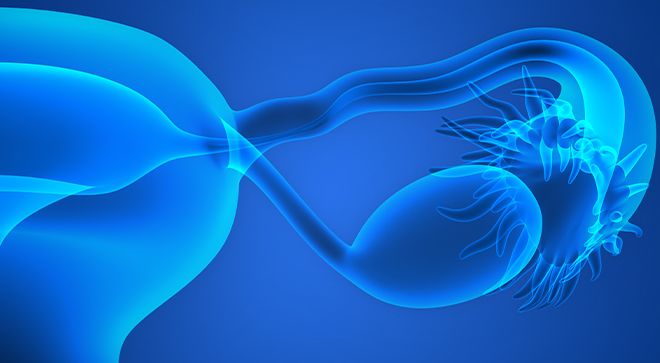Blog
Article
A Community of Support During Ovarian Cancer
Author(s):
Seeing a young man ringing the bell surrounded by family reminded me of the incredible support I received during ovarian cancer, too.
After coming back from a research trip, it was revealed that Hand had ovarian cancer.

I went back to the infusion center today to have my Mediport (device to deliver medicine into the bloodstream) flushed 1 ½ years after completing chemotherapy. A young man in his 20s was there with a festive bouquet of balloons, surrounded by family and friends, all taking pictures and hugging — they were celebrating his ringing of the bell.
In May 2022, my husband and I had just returned from a trip to Uganda where I was doing research at Makerere University for my doctoral dissertation. During the trip, I felt fine, but I had to use the bathroom a lot. At 60 years old and lying awake with jet lag, this seemed normal enough. Upon our return, though, I went to my primary physician in Coalinga, California, just to get things checked out. He recommended a CT scan which revealed a pineapple-sized tumor in the area of my uterus. Thus, I began my cancer journey.
Much of cancer is about waiting. Waiting for the next appointment or scan, waiting for results and waiting for next steps. As I realized during the summer of 2022, the hardest part about waiting is the uncertainty. I had a full hysterectomy (surgical removal of the uterus) that year on July 11, and I didn’t know for sure it was cancer until they biopsied the tumor. Then I was officially diagnosed with stage 2B ovarian cancer. I began chemotherapy in September, one day of infusions every three weeks until the end of December (six cycles total). Then the regular scans and appointments began, as well as the anxiety. I often get the test or scan results well before my next appointment. When I receive the notification, my fingers hover over the MyChart app wondering if I’m emotionally prepared to see the results. I remember sitting alone on the airplane to visit family and forcing myself to look at the results.I often try to interpret the results myself with Google searches, leading to frustration and emotional spiraling.
Throughout the experience, my friends and family have provided emotional support, much like the young man I saw today. My husband accompanied me to my appointments and stayed with me during my chemo sessions (and gave me flowers at the end of each session!). I received care packages from my work, friends and family members. My college roommate was going through breast cancer at the same time, and we shared experiences. My cousin, who had overcome leukemia, called me, and my uncle told me about CURE magazine. My adult daughters, the rest of my family and my church family have supported me and celebrated with me. This is my community that keeps me going.
The Cancer Institute in Clovis, California, where I got my treatment, and my insurance, Blue Cross Blue Shield, also provided support in the form of nurse navigators and care liaisons. They called me regularly to ensure that my questions were being answered, checked on how I was feeling and advocated for my care and insurance coverage. I finally started reaching out more to them instead of relying on my own frantic Google searches.
I lost my hair during chemotherapy, and knit caps became my new normal for a while (one of the students I work with knitted three beanies for me!). Thankfully, the side effects were minimal, so I could keep working remotely. I had also entered the writing phasing of my dissertation and was able to maintain my progress. Focusing on work and projects have also helped in weathering the ups and downs of the diagnosis, chemotherapy and follow-up appointments.
Initially, my scans showed areas of concern and were followed by more scans and a couple of biopsies.Now, the scans look good, and my oncologists say I can get my Mediport removed soon. Does this mean I’m in remission or that I’m “cured”? They don’t use those words, so I am reluctant to. Just like that young man who rang the bell today, though, I feel so incredibly grateful for the community surrounding me.
For more news on cancer updates, research and education, don’t forget to subscribe to CURE®’s newsletters here.




